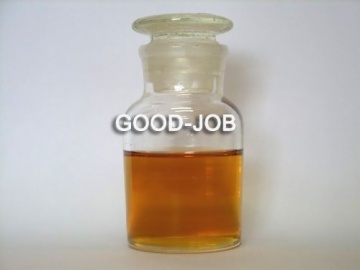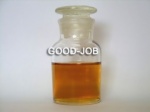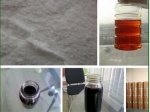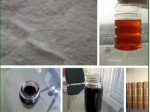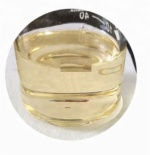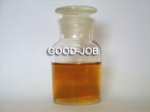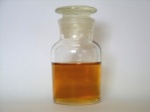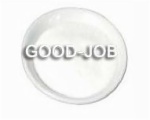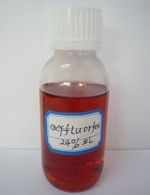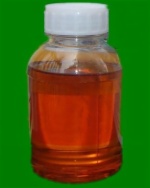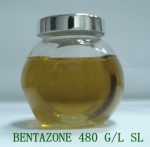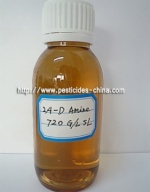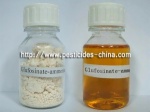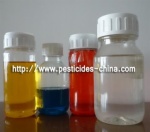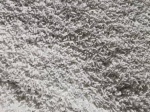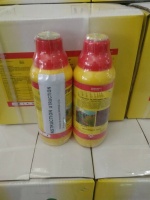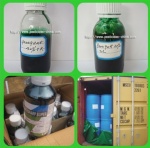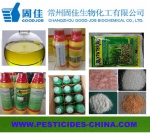Propiconazole 25% + Difenoconazole 25% EC= 50%EC
- Description
Propiconazole 25% + Difenoconazole 25% EC
Trade names for products containing captafol include Crisfolatan, Difolatan, Difosan, Folcid, Haipen, Kenofol, Merpafol, Pillartan, Sanseal, Santar-SM and Sanspor (1, 242).
Propiconazole 25% + Difenoconazole 25% EC= 50%EC
Propiconazole Description
Propiconazole (CAS No. 60207-90-1) is systemic foliar fungicide with protective and curative action, with translocation acropetally in the xylem.
GOOD-JOB supplys Propiconazole 25% + Difenoconazole 25% EC.
Design of packaging and label can be customized from 10mL to 200L for liquids, 1g to 25Kg for solid.
Design of packaging and label can be customized from 10mL to 200L for liquids, 1g to 25Kg for solid.
Pesticide Product | Propiconazole + Difenoconazole |
Uses | Systemic foliar fungicide with protective and curative action, with translocation acropetally in the xylem. |
Formulation Details | 50% EC |
packaging and label | Customized 1g to 25Kg, 10mL to 200L |
Propiconazole Biochemistry
Sterol demethylation (ergosterol biosynthesis) inhibitor.
Sterol demethylation (ergosterol biosynthesis) inhibitor.
Propiconazole Mode of action
Systemic foliar fungicide with protective and curative action, with translocation acropetally in the xylem.
Systemic foliar fungicide with protective and curative action, with translocation acropetally in the xylem.
Propiconazole Applications
Systemic foliar fungicide with a broad range of activity, at 100–150 g/ha. On cereals, it controls diseases caused by Cochliobolus sativus, Erysiphe graminis, Leptosphaeria nodorum, Puccinia spp., Pyrenophora teres, Pyrenophora tritici-repentis, Rhynchosporium secalis and Septoria spp. In bananas, control of Mycosphaerella musicola and Mycosphaerella fijiensis var. difformis. Other uses are in turf, against Sclerotinia homoeocarpa, Rhizoctonia solani, Puccinia spp. and Erysiphe graminis; in rice, against Rhizoctonia solani, Helminthosporium oryzae and dirty panicle complex; in coffee, against Hemileia vastatrix; in peanuts, against Cercospora spp.; in stone fruit, against Monilinia spp., Podosphaera spp., Sphaerotheca spp. and Tranzschelia spp.; and in maize, against Helminthosporium spp.
Systemic foliar fungicide with a broad range of activity, at 100–150 g/ha. On cereals, it controls diseases caused by Cochliobolus sativus, Erysiphe graminis, Leptosphaeria nodorum, Puccinia spp., Pyrenophora teres, Pyrenophora tritici-repentis, Rhynchosporium secalis and Septoria spp. In bananas, control of Mycosphaerella musicola and Mycosphaerella fijiensis var. difformis. Other uses are in turf, against Sclerotinia homoeocarpa, Rhizoctonia solani, Puccinia spp. and Erysiphe graminis; in rice, against Rhizoctonia solani, Helminthosporium oryzae and dirty panicle complex; in coffee, against Hemileia vastatrix; in peanuts, against Cercospora spp.; in stone fruit, against Monilinia spp., Podosphaera spp., Sphaerotheca spp. and Tranzschelia spp.; and in maize, against Helminthosporium spp.
Difenoconazole Description
Difenoconazole Biochemistry
Sterol demethylation inhibitor. Inhibits cell membrane ergosterol biosynthesis, stopping development of the fungus.
Sterol demethylation inhibitor. Inhibits cell membrane ergosterol biosynthesis, stopping development of the fungus.
Difenoconazole Mode of action
Systemic fungicide with preventive and curative action. Absorbed by the leaves, with acropetal and strong translaminar translocation.
Systemic fungicide with preventive and curative action. Absorbed by the leaves, with acropetal and strong translaminar translocation.
Difenoconazole Applications
Systemic Fungicide with a novel broad-range activity protecting the yield and crop quality by foliar application or seed treatment. Provides long-lasting preventive and curative activity against Ascomycetes, Basidiomycetes and Deuteromycetes, including Alternaria, Ascochyta, Cercospora, Cercosporidium, Colletotrichum, Guignardia, Mycosphaerella, Phoma, Ramularia, Rhizoctonia, Septoria, Erysiphe and Venturia spp., Erysiphaceae, Uredinales and several seed-borne pathogens. Used against disease complexes in grapes, pome fruit, stone fruit, potatoes, sugar beet, oilseed rape, bananas, cereals, rice, soya beans, ornamentals and various vegetable crops, at 30–125 g/ha. Used as a seed treatment against a range of pathogens in wheat and barley, at 3–24 g/100 kg seed.
Systemic Fungicide with a novel broad-range activity protecting the yield and crop quality by foliar application or seed treatment. Provides long-lasting preventive and curative activity against Ascomycetes, Basidiomycetes and Deuteromycetes, including Alternaria, Ascochyta, Cercospora, Cercosporidium, Colletotrichum, Guignardia, Mycosphaerella, Phoma, Ramularia, Rhizoctonia, Septoria, Erysiphe and Venturia spp., Erysiphaceae, Uredinales and several seed-borne pathogens. Used against disease complexes in grapes, pome fruit, stone fruit, potatoes, sugar beet, oilseed rape, bananas, cereals, rice, soya beans, ornamentals and various vegetable crops, at 30–125 g/ha. Used as a seed treatment against a range of pathogens in wheat and barley, at 3–24 g/100 kg seed.
Difenoconazole Phytotoxicity
In wheat, early foliar applications at growth stages 29–42 might cause, in certain circumstances, chlorotic spotting of leaves, but this has no effect on yield.
In wheat, early foliar applications at growth stages 29–42 might cause, in certain circumstances, chlorotic spotting of leaves, but this has no effect on yield.





